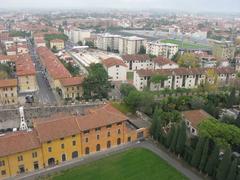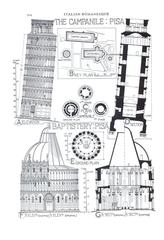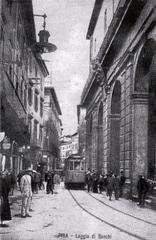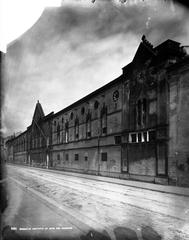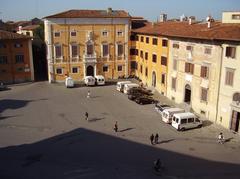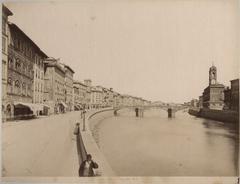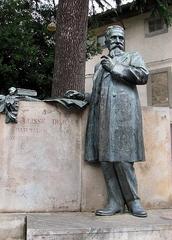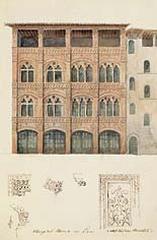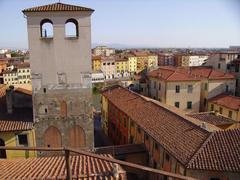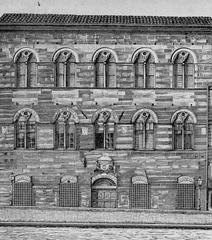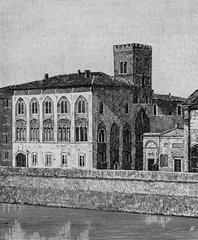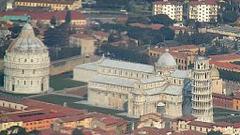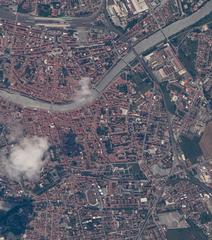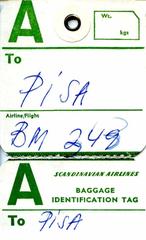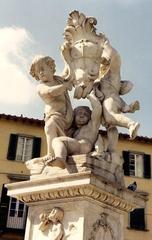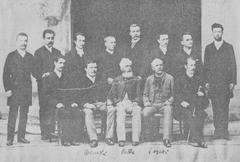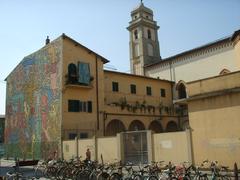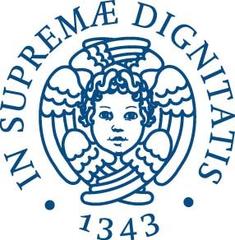Church of Saint Peter a Grado: Visiting Hours, Tickets, and Historical Guide for Pisa, Italy
Date: 04/07/2025
Introduction
The Church of Saint Peter a Grado (San Piero a Grado), located just outside Pisa, is a remarkable testament to Italy’s early Christian heritage and medieval artistry. According to tradition, this site marks where Saint Peter landed in Italy in 44 AD, making it a destination of spiritual pilgrimage for centuries. The basilica’s layered history, distinctive Romanesque architecture, and exceptional frescoes by Deodato Orlandi make it an essential stop for art enthusiasts, history lovers, and travelers exploring Tuscany. This comprehensive guide offers detailed historical context, practical visiting information—including hours, tickets, accessibility, and nearby attractions—as well as tips for a meaningful and respectful visit.
For further information, official details are available via the Visit Tuscany, Pisa Unica Terra, and Sacred Destinations websites.
Historical Overview
Early Origins and Apostolic Legend
San Piero a Grado is rooted in the legend that Saint Peter landed here en route from Antioch to Rome, celebrating mass at a primitive altar now symbolized within the apse (Love from Tuscany; Terre di Pisa). Archaeological evidence shows the basilica was built atop a Paleochristian church, itself constructed on Roman civil remains, reflecting continuous use from the 4th–5th centuries CE through the Middle Ages (Wikipedia; Nomads Travel Guide; Visit Tuscany).
Medieval Construction and Evolution
The current church structure began to take shape in the 10th century, expanding through the 11th and 12th centuries during Pisa’s maritime ascendancy. Its strategic position once on the coast (now several kilometers inland due to river sedimentation) underscored Pisa’s religious and commercial significance (Nomads Travel Guide). The architectural plan features a nave and two aisles divided by ancient Roman columns, many repurposed from nearby ruins. The triple apse design on the eastern end, in place of a traditional façade, sets the basilica apart and reflects early Christian and Byzantine influences (Terre di Pisa; Sacred Destinations).
The exterior is characterized by alternating tuff stone and white marble, with decorative blind arches and a now-preserved collection of 10th–11th-century ceramic basins of Islamic and Mediterranean origin, displayed at the Museo Nazionale di San Matteo (Visit Tuscany).
Artistic Treasures: Frescoes and Iconography
Inside, a significant fresco cycle by Deodato Orlandi (early 14th century) covers the walls with scenes from Saint Peter’s life and the history of the papacy, including a unique frieze depicting all popes from Saint Peter to John XVIII (Traveling in Tuscany; Visit Tuscany). The nave’s capitals, each with distinct motifs, and the wooden trussed roof add to the church’s architectural charm.
Later Modifications and Preservation
The 12th-century bell tower was destroyed during World War II, with only its base remaining (Visit Tuscany). Restoration efforts continue to preserve the structure’s architectural and artistic integrity, despite some deterioration of the frescoes (Nomads Travel Guide).
Romanesque Architecture: Structure and Layout
San Piero a Grado exemplifies early Romanesque architecture in Tuscany. Measuring approximately 60 meters in length and 20 meters in width, the basilica’s wide nave and two aisles are separated by rows of ancient columns (Pisa Unica Terra). Clerestory windows illuminate the nave, highlighting the extensive frescoes and the rhythm of arches and columns, while the triple sanctuary of apses is a rare feature in Italian Romanesque churches (Sacred Destinations).
The exterior’s alternating stone and brick, blind arches, and modest ornamentation reflect the Pisan Romanesque style. The use of spolia columns connects the church’s Christian narrative to its Roman past (Visit Tuscany).
Religious and Cultural Significance
San Piero a Grado is not only an architectural gem but also a vital religious site. Its apostolic tradition draws pilgrims and history enthusiasts, especially during the annual feast of Saint Peter on June 29, which features special Masses and processions (Pisa Unica Terra). The basilica continues to serve as an active parish church and a center for local cultural events, engaging the wider community in preservation and celebration (Visit Tuscany).
Visiting Information
Opening Hours
- General: Typically open Tuesday to Sunday, 10:00 AM – 6:00 PM; closed on Mondays and major holidays. Hours may vary seasonally or during religious festivals (official Pisa tourism website).
- Special Events: The church may open for extended hours during religious celebrations or concerts.
Tickets and Admission
- General Admission: Usually free; donations are encouraged to support ongoing preservation.
- Special Exhibitions or Tours: Occasionally, a fee may be charged for guided tours or special events. Adult tickets are typically €5, with reduced rates for youth and free entry for children under 18 (Visit Tuscany).
Accessibility
- Mobility: The church is partially accessible; ramps provide access to the main nave, while some areas may have uneven flooring or steps. Assistance is available upon request.
- Parking: Available nearby for cars and tour buses.
- Public Transport: Reachable by bus from Pisa Centrale station (bus line LAM Rossa).
Guided Tours and Services
- Guided Tours: Available daily, with local experts providing in-depth insights into the basilica’s history and art. Audio guides and informative brochures are also offered.
- Group Bookings: Arrangements for groups and school visits can be made in advance through local tourism offices.
Visitor Etiquette
- Dress Code: Modest attire is required; shoulders and knees should be covered.
- Photography: Non-flash photography is permitted. Tripods and flashes are discouraged to protect the artwork.
- Silence: Please maintain a respectful atmosphere, especially during services.
Practical Tips and Visitor Experience
- Best Time to Visit: Weekdays and early mornings offer a quieter experience.
- Combine Your Visit: Explore nearby attractions such as the Leaning Tower of Pisa, Pisa Cathedral, and Museo Nazionale di San Matteo.
- Photography: Capture the church’s unique exterior, apse frescoes, and the interplay of light and architecture.
- Events: Attend the feast of Saint Peter (June 29) for a local cultural experience.
Frequently Asked Questions (FAQ)
What are the opening hours?
Tuesday to Sunday, 10:00 AM – 6:00 PM. Closed on Mondays. Check the official tourism website for updates.
Is there an entrance fee?
General admission is free; some guided tours or exhibitions may charge a fee.
Is the church wheelchair accessible?
The main nave is accessible via ramp; some areas may have steps or uneven floors.
Are guided tours available?
Yes, guided tours and audio guides are available.
Can I take photographs inside?
Yes, but without flash or tripods.
How do I get there?
By car, bicycle, or bus from Pisa city center. Parking is available on site.
Notable Events and Festivals
- Feast of Saint Peter (June 29): Includes processions, music, and special Masses.
- Cultural Events: Occasional concerts and community gatherings; check local listings for dates.
Conclusion
The Church of Saint Peter a Grado offers an unparalleled journey through Pisa’s religious, artistic, and architectural history. Its apostolic legend, rare Romanesque features, and medieval frescoes make it a vital site for anyone interested in Tuscany’s rich heritage. Free admission, accessible visiting hours, and its proximity to Pisa’s major attractions make it an essential inclusion in any Tuscan itinerary.
For the most current information on visiting hours, tickets, and events, consult the official Pisa tourism website and consider using audio guides or the Audiala app for an enhanced experience. Discover more about Pisa’s cultural treasures and plan your visit today!
Visual Suggestions
- Exterior view of San Piero a Grado Basilica (alt text: “San Piero a Grado Basilica exterior view”)
- Interior frescoes by Deodato Orlandi (alt text: “Frescoes inside San Piero a Grado Basilica”)
- Ceramic basins frieze detail (alt text: “Ceramic basins frieze on San Piero a Grado exterior”)
- Interactive location map showing proximity to Pisa city center and nearby attractions
Sources and Further Reading
- Love from Tuscany: San Pietro a Grado, Pisa
- Terre di Pisa: Basilica di San Piero a Grado
- Wikipedia: San Piero a Grado
- Nomads Travel Guide: Basilica Romanica di San Piero a Grado
- Visit Tuscany: Basilica of San Piero a Grado
- Pisa Unica Terra: San Piero a Grado
- Sacred Destinations: San Piero a Grado
- Museo Nazionale di San Matteo: San Matteo Museum Pisa
- Comune di Pisa: Chiesa di San Piero a Grado
- Traveling in Tuscany: San Pietro a Grado
- Official Pisa Tourism Website
